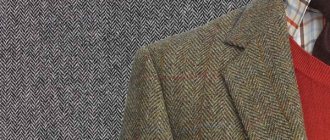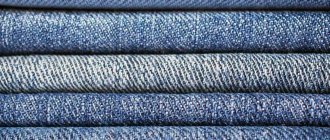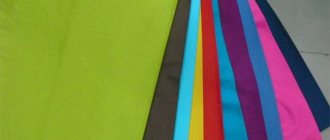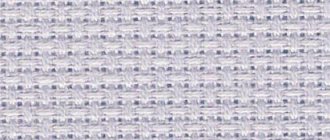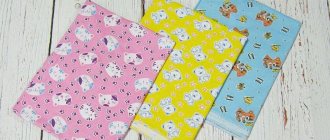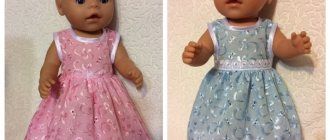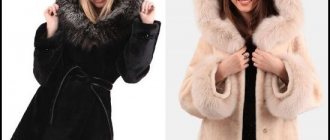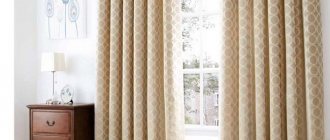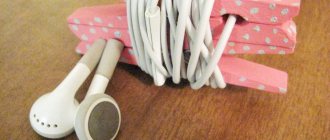To get a beautiful, even stitch on things, you need to take into account many factors. One of them is a competent choice of threads. If they do not correspond to the type of material or needle size, the stitches will be uneven, ugly, or missing completely.
Sometimes the thread simply breaks, which suggests a malfunction of the equipment, but more often the reason is the wrong choice. What factors should you pay attention to when selecting? What types are they presented in?
Types of threads and nuances of operation
Each sewing machine comes with instructions that indicate how to use a certain type of thread depending on the material. Sewing products are represented by the following types:
Cotton
A universal solution that goes well with handmade work, which is important both when sewing a new item and when restoring an old one.
They are in demand both among sewing masters and beginners. Cotton products are inexpensive and suitable for any material.
A universal solution is size 50, but if the fabric is too thin, tears and holes in the stitch area are likely.
With a high density of the material being processed, on the contrary, the strength may be too low, which can lead to ruptures.
Polyester
Synthetics ensure a beautiful, even stitch. Due to the smoothness of the fibers, there are no roughnesses in the stitch area that are characteristic of other materials. The threads are elastic and can withstand some tension without causing even minimal damage.
A modified solution is a polyester thread in a cotton sheath, combining the advantages of both options.
Reinforced
The special structure of the fibers ensures maximum elasticity and resistance to mechanical stress. Domestic marking is determined by the type of material.
LH - cotton-based thread, LL - flax, LS - wool. Thickness is also indicated; the higher the number, the thinner the product.
Nylon
They withstand contact with water, including long-term contact, and are characterized by fairly high rigidity, and therefore are used in the production of shoes, bags and other accessories subject to high loads. In clothing, nylon threads can be used for hidden stitches. The thread is formed from one fiber, or from several, the structure affects the strength.
Silk
Contrary to popular belief, it is permissible to use silk threads not only with fabrics made from similar raw materials or wool, but also with others. They are quite expensive, but are characterized by color fastness and do not fade with regular ironing or high-temperature washing.
The main point is to choose the correct size and focus on the structure of the material being sewn.
Special types of threads are used to decorate clothes and form unusual embroideries and patterns. Special threads with metallized fibers and impregnations with compounds capable of accumulating and emitting light are also suitable for these purposes.
Which yarn is better
What kind of yarn is there? Yarn for knitting can be: wool, cotton, silk, synthetic, and mixed. As you noticed, it varies in composition. To determine it, you need to set fire to a piece of thread and watch the combustion.
If it burns slowly and you can smell a resinous smell, and a ball forms at the end of the thread that can be easily broken by your fingers, then this is natural wool. This is roughly how a silk thread burns.
If a hard ball has formed at the end of the thread that cannot be destroyed without effort, then it is synthetic.
Natural yarn: linen, viscose, cotton, when burned, turns into light ash and emits a smell similar to burnt paper.
Yarn varies not only in composition, but also in thread thickness. A thin thread is suitable for knitting openwork, light, summer items. Thick yarn is ideal for winter, casual, and sportswear. From two to three thin threads, you can get one thick one by adding it.
Which yarn is better
Let's look at the pros and cons.
Wool . Wool yarn is similar to human hair, so the contact with the skin is very pleasant. The wool of various animals: sheep, camel, goat, rabbit, dog differ in properties, but their general quality is to retain heat. It stretches well, is resistant to creasing, and gets wet more slowly when wet than vegetable yarn. The downside is that the yarn tends to fall off and pellets form during friction.
Why does wool fall off?
Wool fibers, consisting of many cells, are covered with a large number of scales. Felling of wool, which is how this phenomenon is usually called in professional language, is observed when the yarn is subjected to “thermal shock” - during sudden cooling or heating - due to the expansion that occurs for this reason, respectively. Constrictions, cells and adhesion of the outer scales of wool hairs.
In some cases, this property of wool is used specifically, for example, in the production of felt and cloth. Therefore, felting is not always an indicator of low quality yarn. The looser the thread is twisted, the more it falls off. To eliminate this drawback, plant or artificial fibers are added to the composition.
The most popular composition: wool and acrylic. The adhesion of wool hair scales occurs, as a rule, under the influence of one of three factors: humidity, high/low temperatures, friction (with the participation of alkali). It is for this reason that machine washing is contraindicated for pure wool products and gentle hand washing is recommended - without strong pressure and twisting.
Woolen items are not soaked in water for a long time, not wrung out, not hung, but laid out on a horizontal surface.
Acrylic . Natural gas is the raw material for producing acrylic. Pros: strength, thermoplasticity, light fastness. The ability to dye well allows you to obtain bright yarn that will not fade. Items made from acrylic yarn are less likely to fall off; this thread is suitable for machine knitting. Acrylic mixed with wool or mohair is used to create fluffy products in beautiful colors. Disadvantage: low hygroscopicity.
Cotton . The properties of cotton include resistance to alkali, hygiene, and breathability. It is comfortable to wear, abrasion resistant, soft and pleasant to the body. Cotton consists of 90% pure cellulose. It is stronger than wool, but inferior in strength to flax and silk. Washing cotton is a pleasure. The product is pre-soaked and is easy to wash. The downside is that cotton shrinks a lot and takes a long time to dry. Cotton yarn is not elastic, so it is used in blended yarns with acrylic or wool. Mercerized cotton is a high tenacity yarn. A thread that is thin, smooth and silky.
Viscose . A fiber from plants and wood is viscose. It is soft to the touch, has moisture absorption, and gives a feeling of coolness in hot weather. Modal is a modified viscose fiber, stronger than viscose itself, dimensional stable and easy to care for.
Silk . Silk thread is cool in hot weather. It is surprising that while absorbing moisture up to 50% of its weight, it does not become wet. The silk thread is strong, no pellets are formed. Silk should be washed with mild detergents and never dried in the sun. For knitting, mixed yarns are produced - with viscose, cotton, synthetic fibers.
Linen (Flax) . Yarn made from flax is very strong, does not shrink at high temperatures and practically does not shrink, and is resistant to rotting. Linen products absorb moisture and dry faster. In hot weather, flax cools, in cool weather it warms. The service life is long, it can reach half a century.
Bamboo . A product made from bamboo yarn perfectly absorbs moisture and gives a feeling of coolness. Bamboo fiber is durable, has a shine, is softer than cotton, and has a quality similar to silk.
Polyester . High-strength and wear-resistant fiber, products retain their shape perfectly.
Polyamide . Fiber of artificial origin, quick-drying and retains its shape.
Mixed fiber yarn and wash
Today it is impossible to imagine modern knitwear fashion without the use of a mixed composition of yarns. Variations in yarn composition provide unlimited possibilities for creativity and implementation for clothing designers.
Yarns containing natural and high-tech fibers are always in the lead.
Using modern chemical methods, fibers are created that meet the high demands placed on knitwear. New technologies in production make the yarn more comfortable to wear, add shine, new effects appear - from weightless fluffiness to fur density, making the yarn voluminous without increasing its weight. Modern yarn with this composition holds its shape well, does not shrink, does not wrinkle, and washes well.
The mixed composition of yarn with natural fibers enhances the positive qualities, leveling out the shortcomings. For example, a cotton product does not lose shape and does not lose its hygroscopicity, and all thanks to the admixture of high-tech fibers.
Innovations in the composition of modern yarns do not affect the cost in any way. The price of pure wool yarn (cashmere, alpaca) is high, while those mixed with high-tech fibers are available.
Mixed compositions may contain only natural fibers. But the rule remains the same: the shortcomings of one are compensated by the advantages of another fiber (matte linen with the shine of silk, the instability of silk with the stiffness of flax).
How to properly care for products made from mixed yarns?
Each fiber is individual, but when washing you should focus on the weakest component. Choose specialized powders for washing items made from delicate materials. For sensitive fibers, ordinary powders are aggressive and destructive (the product loses its shape, silk yarn loses its shine). On the box of powder you can see a special icon, it looks like this: two knitting needles are stuck into a skein of yarn. This powder can be washed not only by hand, but also in an automatic washing machine on a certain mode.
Especially for the site Handicraft Lessons Galina Dukhnova.
Marking features
To understand the marking, you need to consider that threads can be natural, mixed, or synthetic.
For example, the classification of natural threads is as follows:
- Cotton (cotton). In their pure form, they are rarely used, as they lack strength and wear resistance. Their area of application is sewing clothes that must meet the most stringent requirements for hygiene and safety, for example, baby undershirts, diapers;
- Silk (c), viscose (c) - mainly used for decorative purposes, in needlework, embroidery;
- Linen (marking varies depending on the manufacturer and country of manufacture) - used when working with heavy, high-density fabrics, for example, tarpaulin for backpacks and travel bags.
Synthetic and combined threads are presented in the following categories:
- Reinforced (LH, LL, LS) - the most durable and universal. The thickness is different, varies from 36 to 80, so you can choose a solution for sewing clothes from thin fabric, and for making shoes from thick leather, specialized textiles;
- Polyester threads, including staple threads (L, LSh). The products withstand contact with moisture, are elastic and very durable. Staple threads are used for sewing knitwear, thick polyester threads are used for shoes, bags, leather accessories;
- Polyester textured (PT). The most common solution for sewing knitwear, they are cheap, elastic and durable;
- Polyamide (K). They are used infrequently, can withstand prolonged contact with moisture, but, unfortunately, are afraid of temperature fluctuations.
Foreign brands actively use metric numbering, in which the first number indicates the number of meters of thread in its gram. A number separated by a fraction indicates addition. Also, foreign brands fix the direction of twist: s – left, z – right.
The number of folds affects the quality; the more, the better.
Types of threads and their use for sewing equipment
Sewing threads can be divided into three types:
- Those made from natural materials. These include silk, linen and cotton fibers.
- Created using artificial materials.
- Those that contain both natural and those made from chemical fibers are used.
Choosing threads for a sewing machine
Most often, when using natural threads, cotton ones are chosen. Most often they work this way in the initial stages: they are used to sweep away clothes or parts of them.
When threads made from artificial materials are chosen for work, reinforced ones are usually used. They combine the positive qualities of natural threads and the strength of artificial ones.
In the store, on the packaging of threads you can see letter designations, knowing which you can find out what kind of thread it is.
Here are some of them:
- If there is a designation “Cotton”, we are talking about cotton threads.
- The designation “L” refers to polyester, which are used to create invisible stitches and decorative relief seams.
- The abbreviation "LS" stands for "polyester staple". They are used for light and medium weight fabrics.
- “LT” corresponds to “light textured”. Their area of application is working with elastic knitwear.
- Polyamide fibers (designated by code “K”) are characterized by high strength and resistance to moisture.
There are elastic threads. They are a combination of thin rubber and regular threads. They are called "spandex".
The industry produces many varieties of threads
For sewing thin and medium fabrics
Here are the threads for sewing on a sewing machine, which ones to choose for the job:
- When you plan to sew children's clothes or knitwear, the best choice is cotton thread No. 40. It is suitable for working with cotton fabrics.
- If tulle or chiffon is used, it is recommended to use No. 70-80.
- Working with suiting fabric is done using cotton thread No. 50-70.
- For satin or woolen materials, threads No. 40-70 are suitable, depending on the thickness of the material.
Using silk thread may also work. It is considered universal in its quality. It can sew most types of fabrics.
Choosing the right thread will help you sew a beautiful product.
Principles for selecting threads based on shade, shine, and fabric quality
The listed indicators are of greatest importance during selection. In addition, the fibers must be uniform; this indicator can be assessed by examining the threads on fabric of a contrasting tone. The main quality parameter is a smooth structure with no compactions or knots. Strength can be determined by tension; at its average value, ruptures are unacceptable.
You can choose the thickness of the thread according to the type of product being manufactured and the characteristics of the fabric:
Children's clothes, knitwear, products based on natural cotton. The best option is standard size 40 cotton threads.
Light items made of chiffon, tulle. The best solution is a 70-80 size reel.
Thick fabric used for tailoring suits is processed with 50-70 threads.
Thin products made from dressed wool, satin, and synthetics look great when processed with threads with a thickness of 40 to 70.
For heavy, dense fabrics (such as tarpaulin), artificial, natural leather, strong threads of 30-40 are used.
Silk threads are the most versatile, therefore, there are essentially no restrictions on compatible fabrics.
Classification by finishing features
According to the type of finish, the following materials can be distinguished:
- Matte (feature: complete lack of shine, maximum light absorption);
- Glossy (characterized by shine, making the item more unusual);
- Harsh (made from a material that cannot be cleaned or bleached);
- Standard plain, colored, white or black threads;
- “Smoking” type threads. They are needed to create a gathered effect on the fabric. When treated with heat, they form shrinkage, the stitching tightens, taking the base material with it. The relief features are determined by the type of seam and the structure of the material;
- Threads with special processing that gives them certain properties. For example, this category includes materials treated with a reflective substance or a composition that ensures the ability to withstand open fire.
Quality checking
To purchase a truly high-quality thread, you need to be guided by several points:
It is better to focus on products from trusted brands that are respected by experienced seamstresses.
Unnamed Chinese goods are cheap, however, the markings on the spool do not always correspond to reality; there is a high probability that, for example, the reinforced threads will contain cheaper, low-quality fibers that are not strong enough for sewing some things.
You need to unwind the spool a little and inspect the thread. A high-quality product is smooth to the touch, its thickness is uniform along the entire length, there are no lumps or excessively thin areas. If this condition is not met, then tears will form in thin places, and folds of fabric will form in thick places.
Unfortunately, defects cannot always be seen with the naked eye, and in this case even minimal deviations are important. To avoid mistakes, you need to conduct an inspection using a magnifying glass.
You should also check the uniformity of the shade. If the color is the same along the entire length, this means that the manufacturer strictly adheres to production technology.
Any deviations are clearly visible against a contrasting background. For example, the quality of black thread can be easily checked against the background of contrasting white fabric.
The thread needs to be tightened a little. Any thread has a small reserve of elasticity if it is of high quality, regardless of the material. The rupture will follow only after some tension has been felt.
Expert opinion
Maria Anishchenko
Experienced seamstress, total experience 18 years
Practice shows that threads made from natural raw materials, be it cotton or linen, need to be checked most carefully. Synthetics are cheaper, easier to produce, and do not require the manufacturer to use expensive machines and equipment. Low-quality synthetic threads are very rare.
Quite often there are old threads on the farm that are already 2-3 decades old. Thrifty housewives are trying to use them in business, but this is a wrong decision.
The thread seems to be a very simple product, however, if the temperature and other storage conditions are not observed, the material is destroyed and the structure loses its uniformity.
This affects not only the quality of sewing, but can also damage the mechanisms of modern sewing machines. Even a small knot will lead to jamming; you will have to stop work and carefully remove the material from the work area.
What to consider when choosing threads
It is necessary to pay attention to the characteristics of the selected yarn, since many of them affect how the product will turn out and how easy it will be for you to knit it.
Length and thickness
You can judge the thickness of the thread by looking at the information on the yarn label. The inscription 100 g/150 m means that 150 meters of thread weigh 100 grams. The greater the length of the thread with the same mass, the less its thickness. If there are less than 120 meters of thread in a 100-gram skein, it can be considered thick, medium thickness is 120-300 meters, thin - from 300 meters. Keep in mind that a thread that is too thin is not suitable for knitting, and a thread that is too thick is not suitable for crocheting.
Thread quality
To choose the right yarn, you need to look at the uniformity of the thread, i.e. it must have the same thickness and color along its entire length. There should also be no breaks. If there are thickenings or knots, it will be difficult to knit with such threads.
Color
Choose yarn from the same batch so that threads from different skeins do not differ in color and quality. To do this, you need to carefully read the label. The yarn can be single strand, multi-stranded, or textured.
Correspondence table for material, needle numbers and thread markings
| Material | Type of thread | Needle number |
| Lightweight fabrics. Finished cotton fabrics of minimal thickness, artificial and natural silks, synthetics, knitwear | Cotton threads thickness from 80 to 100, polyester - from 60 to 80, nylon - from 80 to 100 | 9-11 with thread thickness from 70 to 80 |
| Medium weight fabrics. Cotton fabric, satin, canvas, wool, which has undergone appropriate processing. | Cotton threads thickness from 50 to 80, polyester - 50, nylon - 50-80 | 11-14 |
| Heavy fabrics. High-density wool, specialized reinforced tarpaulin, aimed at making bags, tourist clothing, protective suits, fabric for sewing curtains, thick jeans. | Cotton threads – 40-50, polyester – 50, nylon – 50-60 | 14-16 |
| Elastic materials, e.g. double jersey, special fabrics for sports overalls. | Polyester – 50-80, nylon 50 | 11-14. It is better to use special needles designed specifically for working with synthetic fabrics. |
